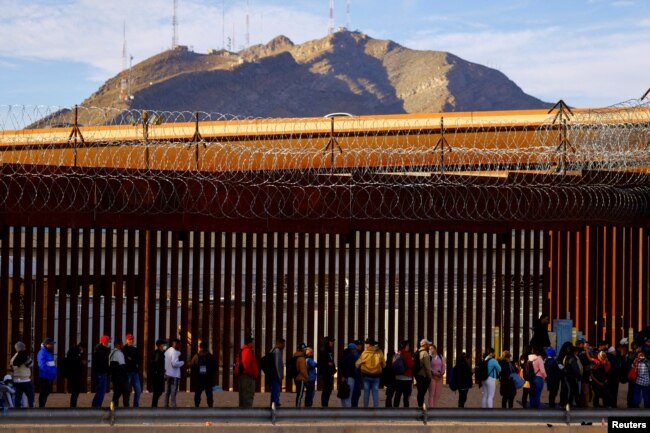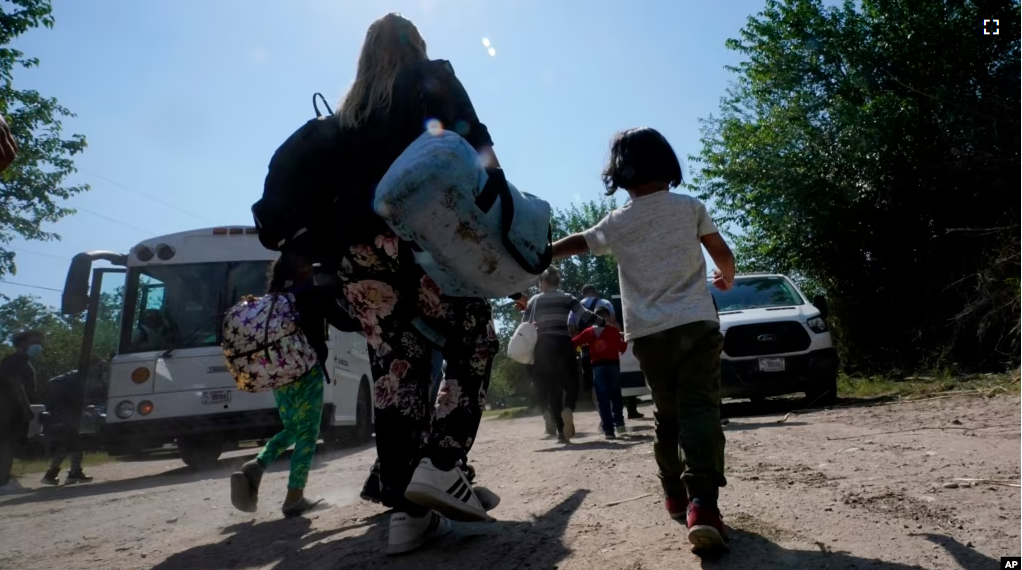The administration of President Joe Biden recently proposed changes to U.S. immigration laws for asylum seekers.
The proposal comes as the U.S. prepares to end immigration regulations tied to the COVID-19 pandemic. The regulations are set to end in May.
The change would permit migrants to enter the U.S only if they did not pass through another country first.
For example, Mexicans who want to seek asylum would be permitted to enter, but a person from Central America who spent time in Mexico on the way to the U.S. would be rejected.
Biden’s proposal must be reviewed for 30 days before it can take effect. If it does, it will stay in place for at least two years.
Experts said the law will likely be challenged by immigration supporters as well as those who want to limit immigration.
The Biden administration described the rule as a necessary tool for when the pandemic-related restrictions called Title 42 end. Title 42 is the name for immigration restrictions put in place at the start of the COVID-19 pandemic to limit the disease’s spread.
Leaders in the departments of Justice and Homeland Security say letting Title 42 expire without putting something in its place would cause a fast increase in migrants trying to enter the U.S.
Here is a look at how the new plan differs from the old one.
What is the new rule and how is it different?
Under the new rule, migrants who come to the southern border of the U.S. will be denied entry unless they tried to gain asylum in another country first.
Migrants will be required to apply for an asylum interview before coming to the U.S. This can be done on a smart phone.
Melissa Crowe is a lawyer with the Center for Gender and Refugee Studies. Crowe supports immigration rights. She and other critics say the new rule includes parts of policies presented by former President Donald Trump. The main difference is that Biden’s law permits migrants to appeal if they are denied entry.

What does the Biden administration say?
If the old rules expire without something in its place, government officials say they are worried about a huge number of migrants coming to the border. There could be as many as 13,000 people per day. That is a much higher number than the busiest days during the last three years. The new rule, officials say, would prevent a fast increase.
Government officials point out there are special rules for people from Haiti, Venezuela, Cuba and Nicaragua. They say that makes Biden’s proposal different from the Trump policies.
Krish O’Mara Vignarajah is the leader of Lutheran Immigration and Refugee Service. She said her organization supports the expanded pathways for those four countries. But the new rule, she said, leaves a lot of people from other countries at risk. People are especially at risk if they must leave their home country right away or if they do not have enough money to come directly to the U.S.
Critics who want to further restrict immigration say Biden’s policy would not cut down the number of migrants. Instead, they said the new plan’s main goal is to better organize the process. They also say the new plan is only supposed to get the current administration “through the next election cycle.”
What is Mexico’s role in the new plan?
The U.S. and Mexico share a border that is more than 3,000 kilometers long. That means most asylum seekers who want to come to the U.S. spend some time there first.
Mexico has not yet commented on the new plan. The Biden administration, however, said it has been in “close consultation” with the Mexican government. The U.S. said Mexico has agreed to take back people who are rejected at the border.
What about other countries in the area?
The people who wrote the new plan say countries such as Mexico, Belize, Costa Rica, Colombia and Ecuador have been accepting migrants. But people who work to help migrants say those countries do not support migrants well enough, so they will still want to come to the U.S.
What happens next?
The rule is open for comment for the next 30 days. If there are no changes, it will go into effect on May 11 when Title 42 ends. However, it is not clear if the old plan will end. Leaders of some states say they want the current plan to stay in place.
I’m Dan Friedell.
Dan Friedell adapted this story for VOA Learning English based on a report by the Associated Press.
_______________________________________________________________________
Words in This Story
regulation –n. a rule
review –v. to think again about something
challenge –v. to push against something
expire –v. to end or for time to run out
apply –v. to ask to get into something
interview –n. an official conversation or series of questions about something
appeal –v. to make an argument asking an authority to resconsider a decision
cycle –n. a period of time that comes around again and again
consultation –n. a serious discussion
